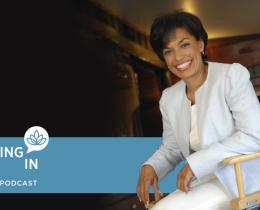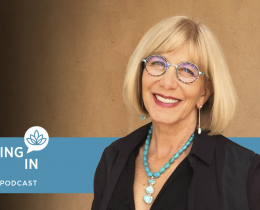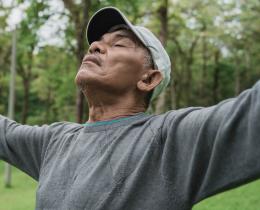Omega: What is the most harmful myth we have about aging?
Miranda: The perceptions we have of the degree to which our body will slow down and that it is inevitable we will have aches and pains and arthritis is completely wrong. There is no inevitability about it at all.
Omega: What is the truth?
Miranda: The science of aging is relatively new, but when you combine it with the science of how the human body functions—things like physiology and anatomy—you see a very interesting picture, one that indicates our joints are designed to last our lifetime unless they’re damaged by an outside event, like disease or an accident. Misuse actually causes 80% of joint problems, either from poor alignment, aggressive sports, or being sedentary.
Omega: What can we do to keep our joints healthy?
Miranda: To prevent joint damage, we have to exercise. If we’re sedentary or semi-sedentary, that is the fastest way to age. You need to use it or lose it, but you need to be sophisticated about how you use it.
So many people use their bodies to the extreme and cause overuse damage, which is almost as bad for premature aging as being sedentary. You have to respect the body and not damage it as you’re using it. This is a new, and quite controversial, concept in the fitness world where most methods are pretty rough on the body and unfortunately create imbalances in one way or another.
Omega: How did you come to create your movement program, Essentrics?
Miranda: I wanted to create a fitness program to completely balance the body on every level. It took me years to do it. I worked with anatomists, physiologists, neurologists, scientists, and doctors. I also worked with thousands of clients of all ages and fitness levels to see what’s really going on when we move.
Omega: Is it meant to replace other types of exercise?
Miranda: It can either be a preparation program or it can be your sole program. It’s my sole program, but we have a lot of people that do their 20 minutes of Essentrics and then they go and run or play squash or ski or do their yoga or pilates or whatever. But if they do their 20 minutes of Essentrics first, they can do everything else with less risk of pain or injury.
Omega: What does Essentrics mean?
Miranda: There is concentric training and eccentric training of the muscles. In concentric training muscles are strengthened as they’re shortened, whereas in eccentric training they’re strengthened as they are lengthened. We have been doing eccentric movements since we first walked the Earth—picking fruit off trees, reaching into cabinets, lifting things up. These type of movements lengthen your body and the muscles are strengthened in this lengthened position. We just took the word eccentrics and changed the ecc- to ess-.
Omega: How is it that we’re building muscle when it’s lengthened? It seems counterintuitive.
Miranda: Imagine you are holding a 50-pound weight in your hand. Now do a bicep curl. As you pull the weight toward you, your biceps are shortening and strengthening.
Now hold the 50 pounds straight out in front of you. The muscle is now lengthened, but it still has to hold the 50 pounds, so it’s being strengthened too. In fact, it’s more strengthening because when it’s longer it’s harder to hold the same amount of weight because the pivot point—your shoulder in this case—is further away from the weight.
With the arm in the lengthened position, only about 70% of the muscle is working. The other 30% of synapses are turned off in this position. This is why you feel weaker and you want to put your arm down. But in this position the 70% will have to work very hard, much harder than the bicep curl, and the neurological system will work harder to recruit 100% of the muscle in this position.
The only difference between this example and Essentrics is we don’t use weights because we don’t want to hurt the joints. We can still strengthen, but more safely.
Omega: How does this kind of training help your joints?
Miranda: When you do a concentric movement, the joints are pulled together. When you do an eccentric movement—strengthen while you lengthen—you liberate the joints.
There’s very little space between our joints—just enough so the joint can slip and slide over the cartilage. If over time you shorten any of the muscles around that joint—perhaps by contracting them with years of concentric training like running, aerobics, or weight lifting—the joints become compressed and then the discs of the spine or the cartilage of the knees or hips wear away.
Joints can also be compressed from being sedentary—as the muscles shrink they pull the joints together. When you have joint pain, you know the joints are being compressed.
Eventually the glossy surface that surrounds the joint itself gets worn down and then it’s bone on bone and you have to have a knee or hip replacement. Lengthening the muscles decompresses the joints and liberates people from pain.
Omega: You say that all we need is 20 minutes a day of Essentrics. Is that really enough to keep us healthy if we sit in an office all day?
Miranda: If you do 20 minutes of Essentrics, you’re getting a full body, gentle stretching and strengthening. You engage all 650 muscles and all 360 joints are moved. Once you’ve done that, nothing is going to congeal. You may not be strong enough to be an Olympic athlete, but nothing is going to congeal. No muscle is going to atrophy, because you used it.
After that it becomes a question about what you want. Do you want to be an athlete in your 90s? Or do you just want to move easily and have a vibrant life? I want to be fully active, so I keep moving throughout my day. I do arm exercises, finger exercises, and feet exercises all day. I get up and wiggle and twist and bend—I’m not sitting still. While I watch the news I’ll do some plies or kicks or something. Nothing extreme, but my body is always in motion, like a kid. They’re always wiggling and twisting and turning. That’s what I encourage people to do.
Omega: Here’s the million dollar question: How can people stay motivated to stick with it?
Miranda: This is a hard one! The most motivating thing is when people feel results. Often people will come to a retreat and, without even knowing the science, literally one class later they start to feel better. Seeing results rapidly is one way to get people motivated.
It’s also very motivating for people who want to stay out of pain. Even for those who have hated exercise all their lives, if they’re out of pain they want to stay that way. They can do Essentrics in a way that is comfortable. They don’t have to hold any awkward positions or do weird postures or listen to pounding music. It’s about being comfortable. The body craves what feels good, so if you’re gentle with your body it will want more movement.




